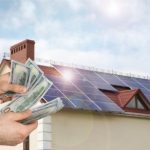In the face of climate change and urbanization, the need for sustainable solutions in building design has become paramount. Two popular approaches for enhancing sustainability in urban environments are green roofs and rooftop solar panels. While each offers distinct benefits, they also present challenges. However, by combining these approaches into a biosolar roof, we can create a synergistic solution that not only boosts biodiversity but also enhances renewable energy production. In this essay, we will explore the concept of biosolar roofs, their benefits, challenges, and the potential they hold for creating more sustainable cities.
Green roofs, also known as living roofs or eco-roofs, involve the cultivation of vegetation on building rooftops. These roofs offer a myriad of benefits, including improved stormwater management, reduced urban heat island effect, enhanced air quality, and increased biodiversity. By creating green spaces in urban environments, green roofs contribute to the overall well-being of both humans and the ecosystem. However, the installation and maintenance of green roofs can be costly and require specialized expertise.
On the other hand, rooftop solar panels have gained popularity as a means of harnessing renewable energy in urban areas. Solar energy is clean, abundant, and readily available, making it an attractive option for reducing reliance on fossil fuels. Rooftop solar installations can significantly reduce carbon emissions and lower energy costs for building owners. Despite their benefits, challenges such as limited space, aesthetic concerns, and intermittency in energy generation pose barriers to widespread adoption of rooftop solar.
The concept of biosolar roofs seeks to address these challenges by integrating green roofs with rooftop solar panels. By combining vegetation with solar panels, biosolar roofs offer a multifaceted approach to sustainability. The vegetation provides numerous benefits, including habitat creation for wildlife, carbon sequestration, and thermal insulation, which can help improve the efficiency of solar panels. In return, the solar panels provide shade and protection for the vegetation, reducing water evaporation and enhancing plant growth. This symbiotic relationship between greenery and solar technology forms the basis of biosolar roofs.
One of the primary benefits of biosolar roofs is their ability to increase biodiversity in urban environments. By providing habitat for birds, insects, and other wildlife, biosolar roofs promote ecological resilience and contribute to the conservation of native species. Additionally, the presence of vegetation helps mitigate the urban heat island effect, creating cooler microclimates and improving air quality. This enhanced biodiversity not only enriches the urban landscape but also provides ecological services that benefit human health and well-being.
Furthermore, biosolar roofs offer advantages in terms of energy production and efficiency. The combination of vegetation and solar panels maximizes the use of available space on rooftops, allowing for greater energy generation per square meter. Additionally, the vegetation helps to cool the surrounding environment, reducing the operating temperature of solar panels and increasing their efficiency. Studies have shown that integrating greenery with solar technology can boost energy output by as much as 20% compared to traditional rooftop solar installations.
Despite their numerous benefits, biosolar roofs also present challenges and considerations. Designing and implementing these systems require careful planning to ensure compatibility between the vegetation and solar panels. Factors such as plant selection, irrigation, and structural load-bearing capacity must be taken into account to optimize performance and longevity. Additionally, maintenance requirements for both the vegetation and solar panels may be more complex than for standalone systems. However, with proper design and management, these challenges can be overcome, and the benefits of biosolar roofs can be realized.
In conclusion, biosolar roofs represent a promising approach to sustainable building design that integrates green infrastructure with renewable energy technology. By combining the benefits of green roofs and rooftop solar panels, biosolar roofs offer a holistic solution for enhancing biodiversity, mitigating climate change, and promoting energy efficiency in urban environments. While challenges exist, the potential of biosolar roofs to transform our cities into more sustainable and resilient habitats is undeniable. As we continue to face the challenges of climate change and urbanization, biosolar roofs stand as a beacon of innovation and hope for a brighter, greener future.







